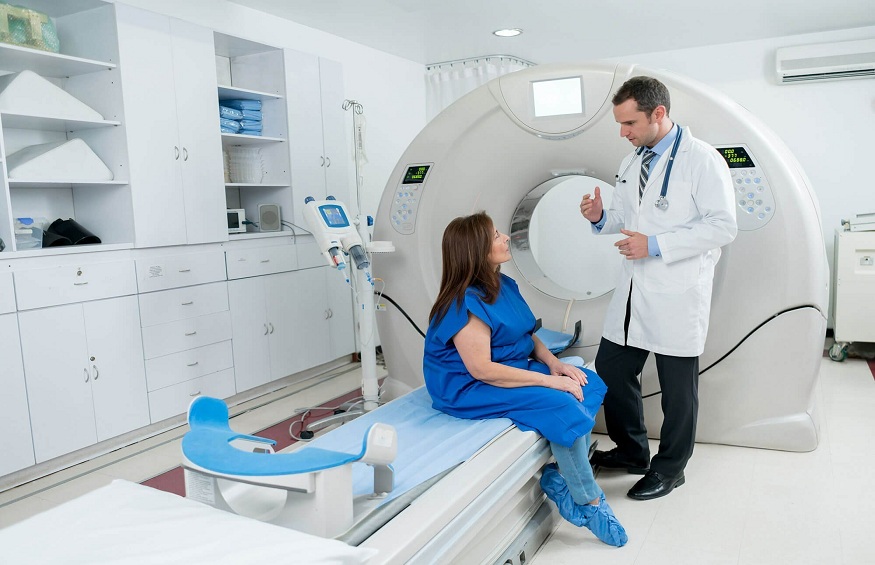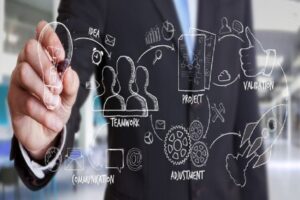The Ultimate Guide to Quality Diagnostic Imaging

Diagnostic imaging in modern medicine is considered a quality tool that provides health care professionals with the necessary equipment for making accurate diagnoses and offering proper treatment. The radiology reading services in the USA play a vital role in maintaining the utmost quality of care through accurate radiological diagnostics. This article will guide us through the intricacies of diagnostic imaging in the USA, introduce different image modalities used in radiology, and clarify the importance of diagnostics.
The Importance of Diagnostic Imaging
- Safety: The use of diagnostic imaging is generally harmless when done by specialists. Even if some techniques entail little radiation, the benefits usually outweigh the minimal risks, especially when necessary for medical emergencies.
- Versatility: Various fields of medicine such as cardiology, oncology, neurology, and orthopedics have embraced diagnostic imaging. It is a highly useful tool that is indispensable for healthcare providers practicing in different areas.
- Patient-Friendly: Patients typically bear diagnostic imaging procedures well. They are fast and painless, and little to no preparation is needed, which makes it possible for people of all age groups to use them.
- Cost-effective: It is possible to save costs in the future by diagnosing an illness early enough and assessing its rightful condition correctly. This usually eliminates the need for expensive and time-consuming treatments.
Types of Diagnostic Imaging Modalities
Such imaging techniques include multiple scans, x-rays, and other imaging methods for detailed images of the internal structures of the body. Each modality has its own specific intent and gets indicated depending on the patient’s medical status and the specific information. The most commonly used modalities include:
- X-rays: X-rays produce images of bones, tissues, and organs using ionizing radiation. These techniques are useful in finding fractures, diagnosing tumors, and detecting lung maladies.
- Computed Tomography (CT) Scans: A CT scan involves the use of X-ray beams combined with computer technology to provide cross-sections of the body’s structure. They have been successfully used for diagnosing internal damage, cancerous masses, and blood vessels.
- Magnetic Resonance Imaging (MRI): MRI is an imaging technique using magnetic fields and radio waves to produce detailed pictures of soft internal body structures like the brain, organ systems, and muscles. This is especially helpful in identifying certain neurological diseases and joint problems.
- Ultrasound: Ultrasound imaging uses high-frequency sound waves to make a picture of internal organs and body tissues in a moment. It is most frequently utilized for fetal monitoring during pregnancy and is vital for the diagnosis of heart, liver, and kidney diseases.
- Nuclear Medicine: Nuclear medicine is about giving small doses of radioactivity to diagnose and cure diseases. This method is useful for examining organs’ structure and function, which helps diagnose conditions such as cancer, thyroid problems, and bone-related health problems.
Radiology reading services in the USA
The United States has some of the best health-care facilities and radiology reading services in the world. Diagnostic modalities are interpreted properly by trained radiologists, whose views emerge through these services. Radiology reading services play a crucial role in timely and accurate radiology diagnosis. Key aspects of radiology reading services in the USA include:
- Board-Certified Radiologists: All quality radiology reading services involve board-certified radiologists, who have received specialized training and certification in their discipline. They are specialists in reading these images and making accurate diagnoses.
- Advanced Technology: Radiology reading services utilize top-notch technology and advanced software to simplify the interpretation procedure. Radiologists are able to detect even minor irregularities with the use of high-resolution displays and advanced imaging software.
- Subspecialty Expertise: Many radiology reading services employ specialist radiologists. The expertise of these professionals is concentrated in specific areas of medicine, such as neuroradiology or musculoskeletal imaging.
- Rapid Turnaround Time: In medical diagnostics, timeliness is paramount. American radiology reading centers focus on fast report turnaround times, thereby delivering imaging reports swiftly to healthcare practitioners. It helps in faster decision-making in patient care.
- Accessibility: Radiology reading services may provide remote reading capabilities, allowing radiologists to view and interpret images from anywhere. Such accessibility is especially important to healthcare institutions in underprivileged and distant regions.
- Collaboration with Healthcare Teams: Radiology reading services closely interact with a healthcare team, such as referral physicians and specialists. Working together, this integration is guaranteed in the incorporation of the findings of imaging into the patient’s general care plan.
How to Ensure Quality Diagnostic Imaging
To ensure that you receive quality diagnostic imaging and radiology diagnostics, consider the following steps:
- Choose a Reputable Facility: Choose an institution that is committed to excellence in health and patient care. Seek accreditation from trusted healthcare organizations.
- Verify the Credentials of Radiologists: If there is a particular subspecialty involved, ensure that the radiologists interpreting your images are board-certified and possess the relevant expertise.
- Follow Preparation Instructions: If you are required to prepare for your imaging procedure, follow instructions given by the hospital or clinic. For properness, images should be precise.
- Discuss Your Medical History: Tell your doctor about any history of medicine and any allergies or previous surgeries before taking the test. This information may contribute to selecting the imaging technique and interpretations.
- Advocate for yourself: Get involved with your own health care. If you worry about your image results, talk it over with your health practitioner.
- Maintain Copies of Your Imaging Records: You should also keep your imaging reports and images with you. They may also be useful if you want to refer to them later or get second opinions.
- Follow Up: Following your imaging procedure, have a visit with your health care provider for discussion of the results, any associated treatments, and additional testing.
Conclusion
Quality diagnostic imaging is an integral part of modern medicine, making possible early detection, timely diagnosis, and adequate treatment for various medical conditions. Radiology reading services are critically important in supplying timely and accurate usa radiology diagnostics. Diagnostic imaging is used to monitor your condition from time to time, allowing you to be well informed about what is going on inside your body. Remember that diagnostic imaging helps protect your health, so be sure to use this tool wisely, and good decisions concerning your healthcare are priceless.







